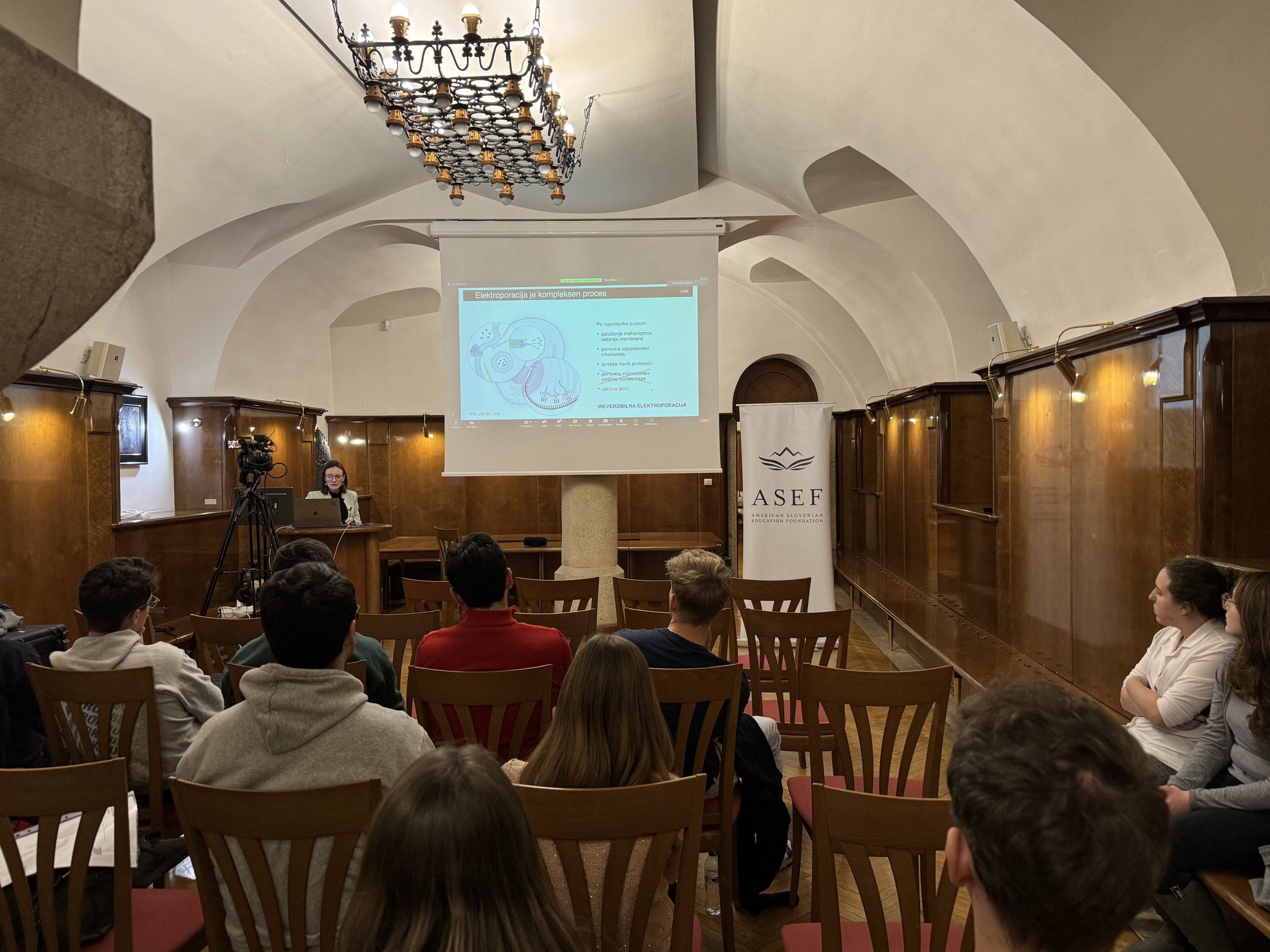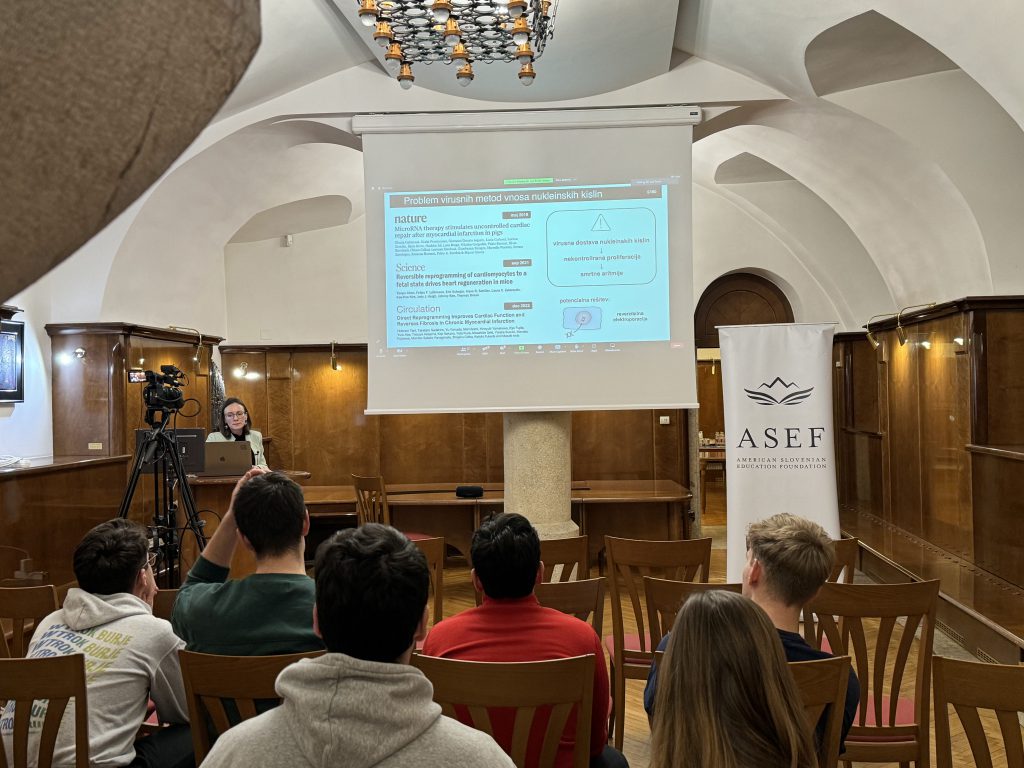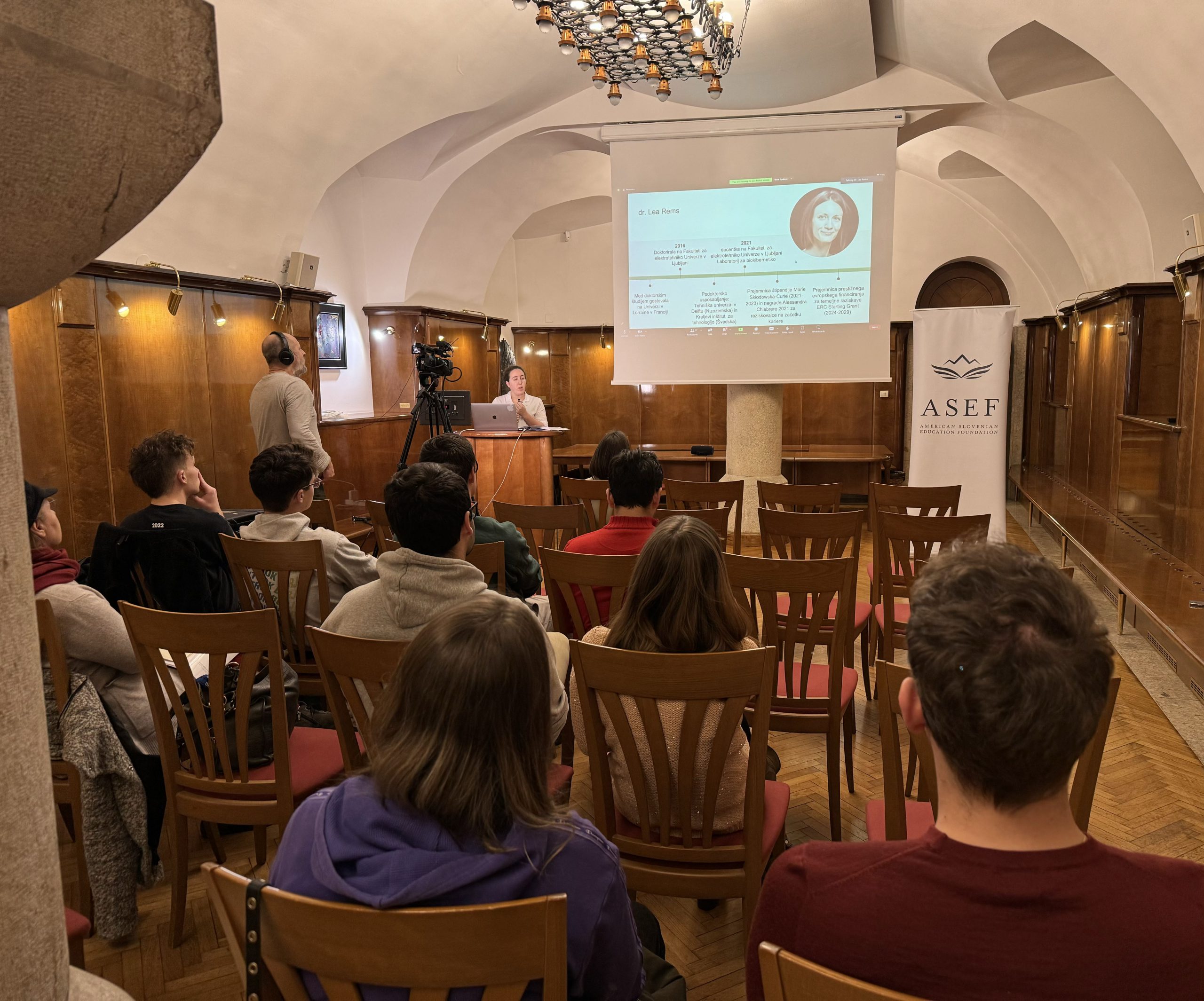
Electroporation – how and why we open the membranes of biological cells with electric pulses
On Thursday, January 18, the first lecture of the new year in the ASEF Speaker Series 2023/2024 took place. In this popular science lecture series, where ASEF professors present their research areas and findings, Dr. Lea Rems delivered a presentation titled “Electroporation – how and why we open the membranes of biological cells with electric pulses.”
Dr. Lea Rems graduated in 2012 and obtained her Ph.D. in 2016 from the Faculty of Electrical Engineering at the University of Ljubljana. Following her doctorate, she pursued postdoctoral training at Delft University of Technology in the Netherlands and later at the Royal Institute of Technology in Sweden. In 2021, she returned to the University of Ljubljana, where she currently holds the position of Assistant Professor at the Faculty of Electrical Engineering and works within the Laboratory for Biocybernetics.
With approximately 13 years of research experience in the field of electroporation, Dr. Rems focuses on understanding the fundamental mechanisms of electroporation at both the molecular level of cell membranes and the individual cell level. Her work involves the application of various experimental methods and computer simulations. She has received numerous prestigious awards, including the Alessandra Chiabrere 2021 Award for early-career researchers. Additionally, she was granted the Marie Skłodowska-Curie Scholarship (2021-2023) and the prestigious European funding for fundamental research, the ERC Starting Grant (2024-2029).

The lecture began with an introduction to how electroporation works—a method in which the temporary increase in the permeability of biological cell membranes is achieved using high-voltage electric pulses. After a theoretical explanation using the Schwan equation, the presentation transitioned to experimental confirmation of the process. The lecturer demonstrated the formation of membrane pores and provided specific examples, such as a potato, which exhibits significantly more flexible and tender tissue after electroporation. This has practical implications for industrial use, reducing the amount of oil needed for frying and leading to greater cost savings.
The method of electroporation is applicable to various cell types and diverse fields, including medicine. It has been extended for cancer treatment purposes and has recently shown remarkable success in treating cardiac arrhythmias. Irreversible electroporation is employed for the non-thermal destruction of arrhythmogenic cardiac tissue in the treatment of cardiac arrhythmias. Ongoing research is paving the way for the use of reversible electroporation as a non-viral method for delivering nucleic acids into cardiac cells, enabling heart regeneration after a heart attack.
The event was moderated by an ASEF Junior Fellow 2023, Tina Logonder. The event was held in a hybrid format, both in the Prešeren Hall at the Slovenian Academy of Sciences and Arts (SAZU) and via Zoom.



